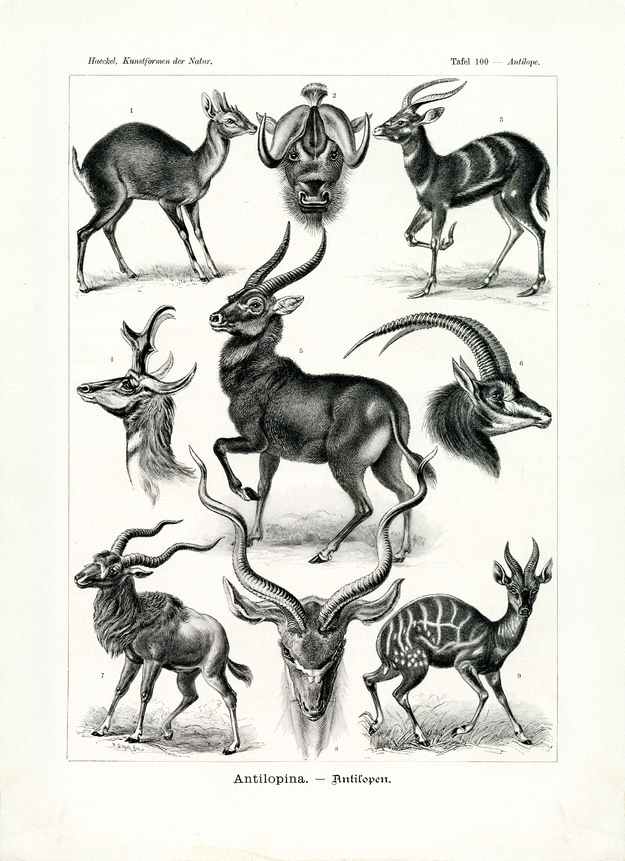Translation of the original German introduction by Ernst Haeckel:
Phylum of Vertebrata (Wirbeltiere); - main class of Gnathostoma (Kiefermäuler); - class of Mammalia (Säugetiere); - subclass of Placentalia (Zottentiere); - legion of Ungulata (Huftiere); - order of Artiodactyla (Paarzeher); - suborder of Ruminantia (Wiederkäuer); - tribe of Cavicornia (Hohlhörner); - family of Antilopina (Antilopen).
The family of antelopes belongs to the group of ruminants (Ruminantia) whose heads are armed with hollow horns sitting on bony horn buds. Other members of these ‘hollow-horned’ (Cavicornia) are goats, sheep and cattle. The differences between these three families and the antelopes from which they originate are difficult to determine, all the more so as many intermediate species are available in between them. At present we already know more than hundred living species of antelopes, earlier united in one category, now distributed to 20 generic groups that are basically differentiated according to the shape of their horns. At present only two of these numerous species live in Europe (chamois in the Alps, Saiga-antelope in Southern Russia); two more in Northern America (pronghorn antelope, fig. 4, and ‘goat antelope’, Haplocerus americanus). The vast majority of all antelopes live in herds, in Africa and, to a smaller extent, in Asia.
Translation by VR Translators Bangalore
We've scanned the original lithography at 1200dpi on the Epson A3 scanner of A3 scanner huren. You can download a 400dpi JPEG here.
